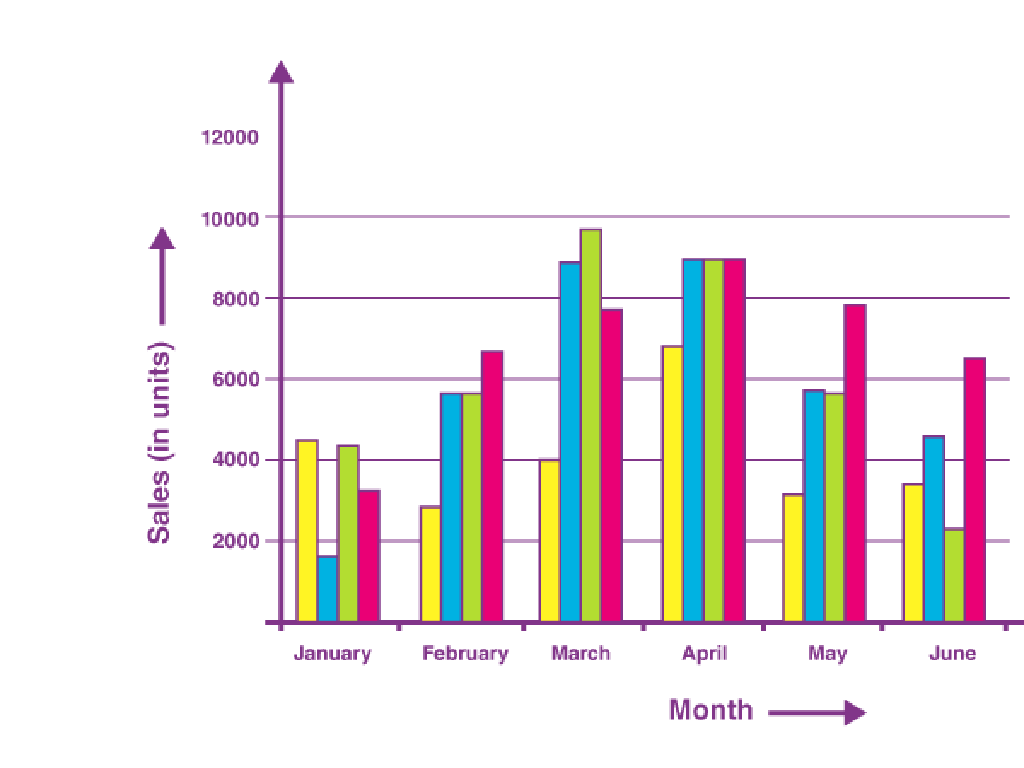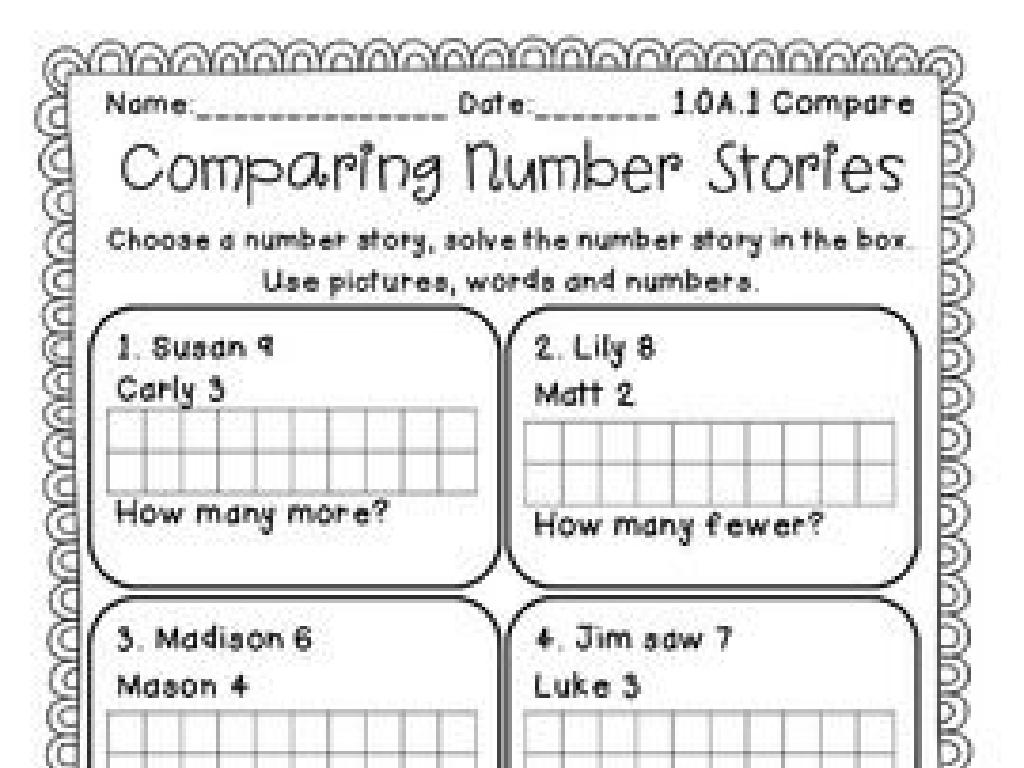Identify Plant Parts And Their Functions
Subject: Science
Grade: First grade
Topic: Plants
Please LOG IN to download the presentation. Access is available to registered users only.
View More Content
Exploring Plant Parts and Functions
– What is a plant?
– Discover plant parts
– Roots, stem, leaves, flowers
– Learn what each part does
– Roots hold plants in soil, leaves make food, etc.
– Fun facts about plants
– Some plants eat insects!
|
Begin the class with a simple question to engage the students: ‘What is a plant?’ After listening to their answers, introduce them to the basic parts of a plant: roots, stem, leaves, and flowers. Explain the function of each part: roots anchor the plant and absorb water and nutrients, stems support the plant, leaves are where photosynthesis happens to make food, and flowers can make seeds to grow new plants. Share fun facts to make the learning enjoyable, like how some plants eat insects! Use real plants or pictures to help students visualize and understand better.
What Are Plants?
– Plants are living things
– They grow in soil and need water and light
– Plants come in many sizes
– From tiny daisies to huge trees
– Plants have different parts
– Stems, leaves, and roots each have a job
– Why plants are important
– They give us air, food, and help nature
|
This slide introduces first graders to the concept of plants as living organisms that grow in the earth. Emphasize that plants, like humans and animals, need certain things to live, such as water, light, and soil. Highlight the diversity in plant sizes and types to spark curiosity. Discuss the basic parts of a plant: stem, leaves, and roots, and their functions. The stem holds the plant up and carries water to different parts, leaves use light to make food, and roots hold the plant in the soil and take in water. Finally, explain the importance of plants in providing oxygen, food, and maintaining ecological balance. Encourage students to think of examples of plants they know and why they might be important.
Plant Parts and Their Roles
– Roots: Anchor and feed
– Roots keep the plant stable in soil and absorb water and nutrients.
– Stem: Support and transport
– The stem holds up the plant and carries water and nutrients to different parts.
– Leaves: Make plant food
– Leaves use sunlight to create food for the plant through photosynthesis.
– Discover each part’s function
|
This slide introduces the basic parts of a plant and their functions, tailored for first graders. Start by explaining that just like humans have different body parts, plants have parts that help them live and grow. Roots act like a plant’s feet, holding it in place and drinking water and nutrients from the soil. The stem is like the plant’s body, holding it upright and moving water and food around. Leaves are the plant’s food factory, using sunlight to make food. Encourage students to touch and observe real plants, if possible, to identify these parts and understand their functions. This hands-on experience will help solidify their learning.
The Roots: The Plant’s Anchor
– Roots act like straws
– They suck up water and nutrients from the soil.
– They keep plants stable
– Like a seatbelt for plants, they hold them in place.
– Think of plants with big roots
– Example: Carrots have big, strong roots.
– Roots are important for health
|
This slide introduces the function of roots in plants. Explain to the students that roots are like straws that plants use to drink water and get nutrients from the soil, which helps them grow. Also, roots act like a seatbelt or an anchor, keeping the plant stable in the ground so it doesn’t fall over. Ask the students if they can think of any plants with big roots, like carrots, to make the concept relatable. Emphasize the importance of roots for the overall health of the plant. Encourage students to think about what might happen to a plant without strong roots.
The Stem: The Plant’s Support System
– Stems hold up leaves and flowers
– They transport water and food
– Think of it like a straw for the plant, moving nutrients from soil to leaves
– Stems vary in size and thickness
– Some stems are skinny like grass, others are wide like tree trunks
– Importance of stem strength
|
This slide introduces the stem as a crucial part of a plant’s anatomy, emphasizing its role in support and transportation. Explain that the stem is like the plant’s backbone, holding up the leaves and flowers so they can get sunlight. It also functions like a set of roads, allowing water and nutrients from the soil to travel up to the rest of the plant. Highlight the diversity in stem types, from the thin blades of grass to the thick trunks of trees, and discuss how the size and strength of a stem can affect the plant’s ability to grow and survive. Encourage students to touch and compare different types of stems if possible.
The Leaves: Nature’s Kitchen
– Leaves make food for the plant
– Using sunlight, leaves cook up nutrients
– Photosynthesis: The food-making process
– Leaves use sunlight to turn water and CO2 into food
– Leaves have many shapes and sizes
– From wide oak leaves to thin pine needles
|
This slide introduces the concept of leaves and their role in a plant’s life. Explain that leaves are like a kitchen for the plant where they make their food using a process called photosynthesis. This process is vital for the plant’s survival and growth. Highlight that leaves can look very different from one another, which can be a fun exploration point for the students. Encourage the children to observe leaves around them, noting the variety in shapes and sizes. This will help them appreciate the diversity in nature and understand the basic function of leaves in a plant’s life.
Flowers and Fruits: Plant Reproduction
– Flowers: The pretty part of plants
– Fruits: Flowers that become seed carriers
– Think of an apple: it starts as a flower!
– Fruits have seeds for new plants
– Seeds inside fruits can grow into new plants, like the seeds in an orange.
– Discuss fruits we’ve eaten today
– Share the name of a fruit you had today and we’ll talk about it!
|
This slide introduces the concept of reproduction in plants through flowers and fruits. Explain that flowers are not just for decoration; they have an important role in making seeds. When a flower is pollinated, it can turn into a fruit. Fruits protect the seeds and help them spread to grow new plants. Engage the students by asking them to name fruits they have eaten, which will help them connect the concept to their daily lives. Use common fruits as examples to illustrate how seeds are contained within and how they are part of the plant’s life cycle. Encourage the children to think about the journey from flower to fruit to new plant.
Let’s Review: Plant Parts and Their Jobs
– Roots: They drink and hold
– Roots absorb water/nutrients and anchor the plant in soil.
– Stems: Towers and highways
– Stems support the plant and transport water and nutrients.
– Leaves: They make the food
– Leaves use sunlight to produce food for the plant through photosynthesis.
– Flowers: Turn into fruits
– Flowers, when pollinated, can develop into fruits containing seeds.
|
This slide is a recap of the basic functions of plant parts for first graders. Emphasize that roots are like straws that drink water from the soil and also act like a seatbelt to keep the plant in place. Compare stems to towers that hold up the plant and highways that carry water and food to different parts. Explain leaves as the kitchen where food is made using sunlight, a process called photosynthesis. Describe flowers as the part of the plant that can turn into fruits, which carry seeds to grow new plants. Use simple language and relatable analogies to help students understand these concepts. Encourage them to think of a plant they know and identify these parts and their functions.
Class Activity: Plant Detective
– Work in groups with plants
– Use magnifying glasses
– Observe closely to see the small details
– Draw and label plant parts
– Show your artistic skills and knowledge
– Discover roots, stems, leaves, flowers/fruits
– Find as many parts as you can
|
This activity is designed to be a hands-on experience for first graders to explore and understand the different parts of a plant and their functions. By working in groups, students can collaborate and discuss their findings. Provide each group with a variety of plants and magnifying glasses to observe the finer details of plant structures. Encourage them to draw their plant and correctly label each part, reinforcing their learning. As they work, guide them to identify roots, stems, leaves, and if available, flowers or fruits. This will help them visually connect each part with its name and function. After the activity, have a discussion about what they discovered and how each part helps the plant live and grow.






